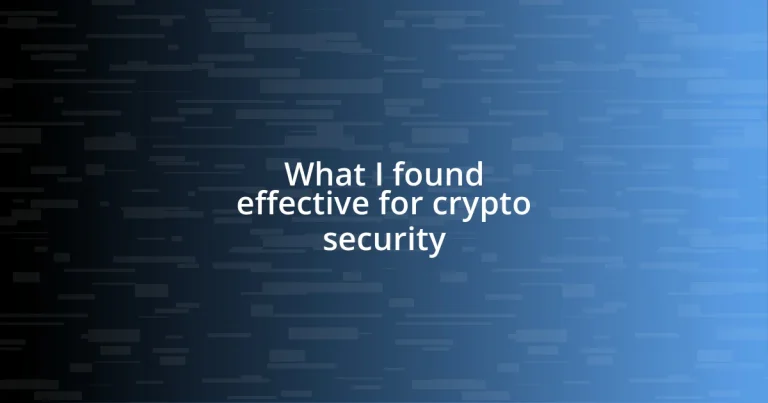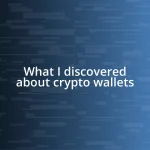Key takeaways:
- Implementing hardware wallets significantly enhances security by storing private keys offline, minimizing the risk of hacks and phishing attacks.
- Adopting strong password practices, including two-factor authentication (2FA) and regular updates, is crucial to protect crypto accounts from unauthorized access.
- Active monitoring and management of crypto assets, including setting up alerts and using analytics tools, empower informed decision-making and enhance overall investment strategies.
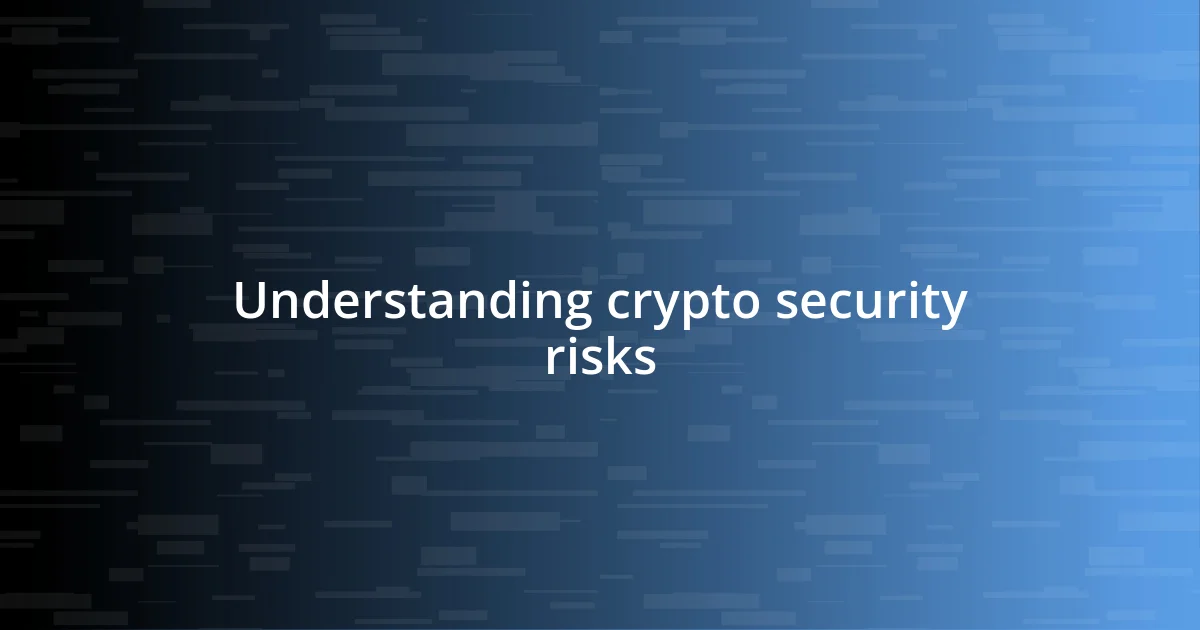
Understanding crypto security risks
When I first ventured into the world of cryptocurrency, I was blindsided by how vulnerable my investments felt. It struck me that while the blockchain technology itself is robust, the surrounding infrastructure is riddled with potential pitfalls—like phishing attacks and exchange hacks. I couldn’t help but wonder, how many people lose their hard-earned money because they underestimate these risks?
One evening, I received a suspicious email claiming to be from a well-known exchange, urging me to click a link to verify my account. I hesitated, reflecting on the countless stories I had heard about people who had clicked before me, only to find their wallets emptied. It’s moments like these that truly highlight the importance of vigilance—crypto security is not just about protecting digital assets; it’s also about safeguarding your peace of mind.
As I navigated through various security measures, I realized that even the most advanced technologies can’t completely shield us from human error. Remember the infamous Mt. Gox incident? It was a stark reminder of how a single lapse could lead to catastrophic losses. In a space where every decision carries weight, I began to ask myself: Am I truly prepared for these risks, and what steps am I taking to protect my investments?
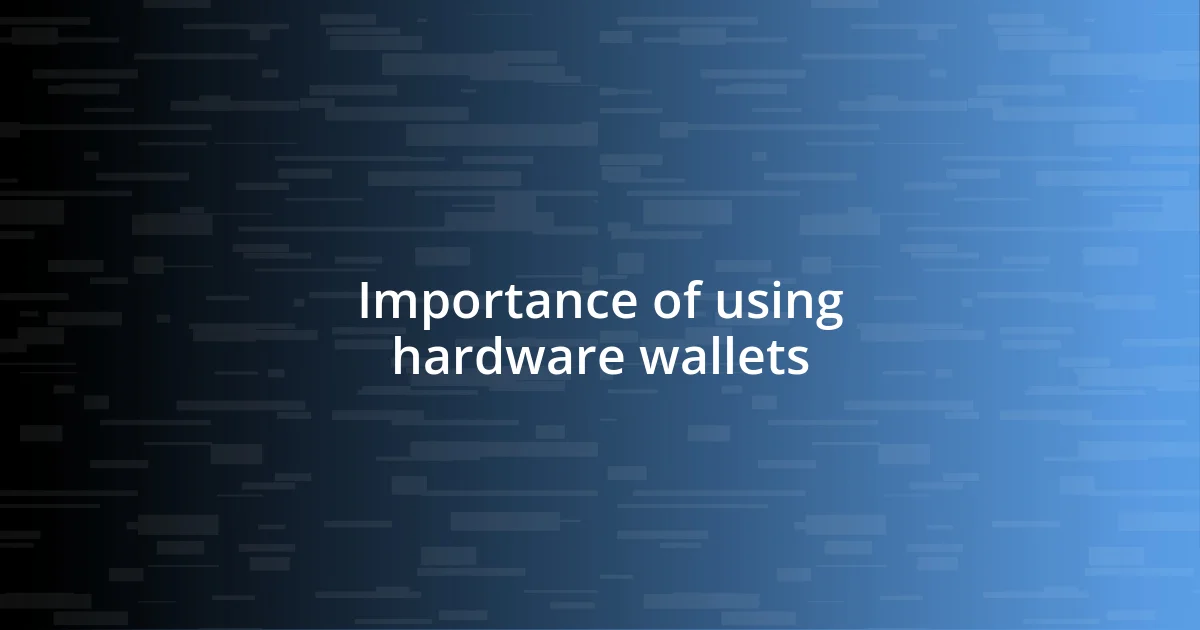
Importance of using hardware wallets
Using hardware wallets has become a cornerstone of crypto security for anyone serious about protecting their assets. Unlike keeping your cryptocurrencies on an exchange or in software wallets, hardware wallets store your private keys offline, making it incredibly difficult for hackers to access them. I remember the first time I set up my hardware wallet; it felt like building a personal fortress for my digital treasures. The sense of security that came with knowing my assets were safe from online threats was truly liberating.
Here are some key reasons why hardware wallets are essential:
- Offline storage: Your private keys are not connected to the internet, minimizing exposure to potential attacks.
- Enhanced security features: Most hardware wallets come with additional layers of protection, like PIN codes and recovery phrases.
- Resilience against phishing: By keeping your keys offline, you protect yourself from deceptive scams that target online wallets.
- Ownership: You have full control over your funds, unlike exchanges where your assets could be vulnerable to their security breaches.
After that initial setup, I felt a renewed sense of confidence in my trading activities, free from the fear that each notification on my phone could spell disaster. Trust me, if you’re in this for the long haul, a hardware wallet is a small investment that brings immense peace of mind.
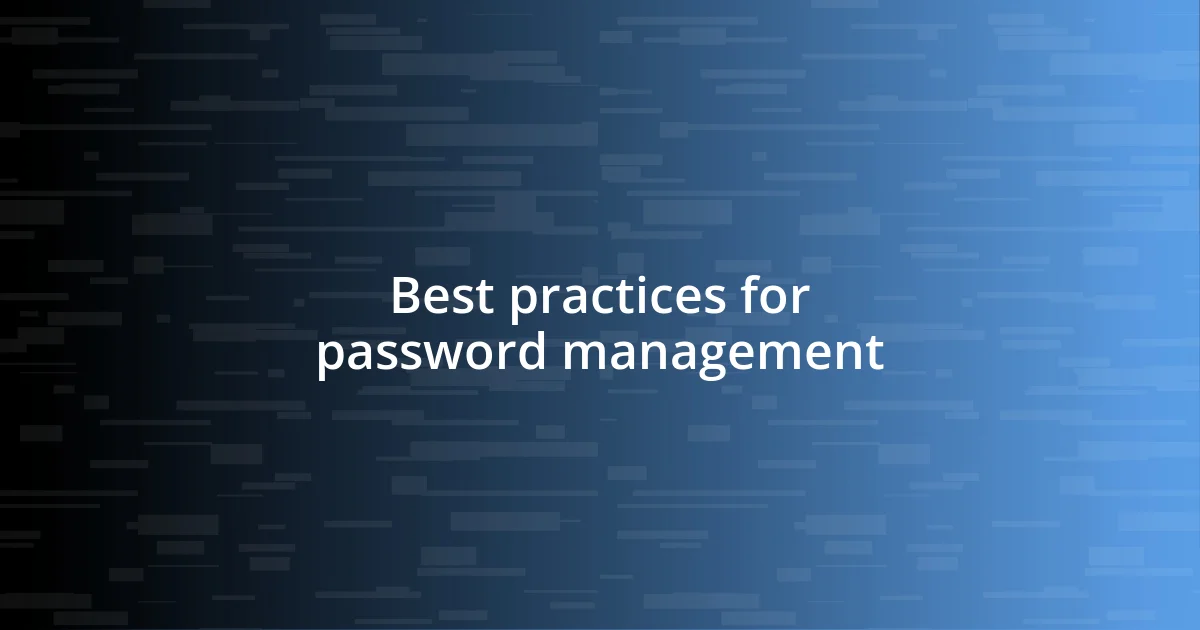
Best practices for password management
When managing passwords, it’s easy to overlook their significance, but I have learned from experience that a strong password is your first line of defense against unauthorized access. I was once caught off guard by using a simple password for my crypto account; I quickly realized it was like leaving the front door wide open. A unique, complex password can save you from a potentially devastating breach, sparking my obsession with using password managers to generate and store them securely.
One particular time, after a friend had a distressing experience with a hacked account—he lost several cryptocurrencies overnight—I couldn’t help but think about how easily that could have been avoided. This motivated me to adopt strict password protocols, including implementing two-factor authentication (2FA) wherever possible. The combination of a strong password and an additional verification layer has become my standard practice, providing me a sense of security that I once took for granted.
Another practice I adhere to is regularly updating my passwords. I used to neglect this, thinking my passwords were strong enough. However, I learned the hard way when a service I used suffered a data breach. Even though I thought my password was secure, it was exposed due to their negligence. Now, I prioritize setting reminders to change my passwords every few months, ensuring that even if a breach occurs elsewhere, my crypto assets remain safe.
| Best Practices | Description |
|---|---|
| Use Strong, Unique Passwords | Create passwords that are at least 12 characters long with a mix of uppercase letters, lowercase letters, numbers, and symbols. |
| Implement Two-Factor Authentication (2FA) | Utilize an extra layer of security by enabling 2FA on all crypto-related accounts. |
| Regularly Update Passwords | Change your passwords periodically, ideally every 3-6 months. |
| Use a Password Manager | Store and generate strong passwords securely with a trusted password manager tool. |
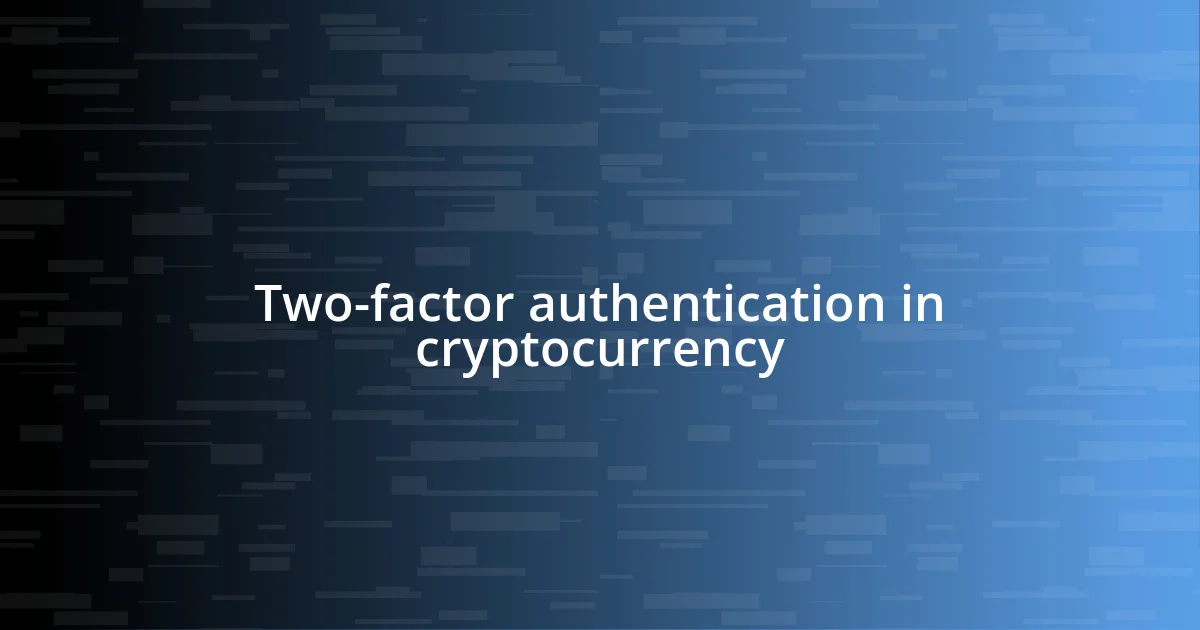
Two-factor authentication in cryptocurrency
Enabling two-factor authentication (2FA) has been a game-changer in my approach to cryptocurrency security. After integrating it into my accounts, I suddenly felt a layer of security that I didn’t know I was missing. Just thinking about those moments when I’ve logged in feeling a bit anxious, only to be greeted by the second verification step, instantly soothed my nerves. It seemed to scream, “You’ve got this, and your assets are safer!”
One striking incident stands out in my memory. A colleague of mine suffered a catastrophic loss after ignoring 2FA as an extra measure. His account was compromised because his password, while strong, was not enough to deter a determined hacker. That night, as I recounted the toll it took on him—both financially and emotionally—I resolved never to leave my security to chance again. 2FA became non-negotiable for me, acting as that friendly guardian at the gate of my digital vault.
Sometimes, I wonder how many people still forgo this essential step in their security strategy. Is it the extra step that feels burdensome, or maybe a lack of understanding of its importance? Each time I enter a code from my authenticator app, I remind myself how worth it is. If you think about the peace of mind it brings, 2FA quickly transforms from a simple technical feature into a critical component of a robust crypto security posture.
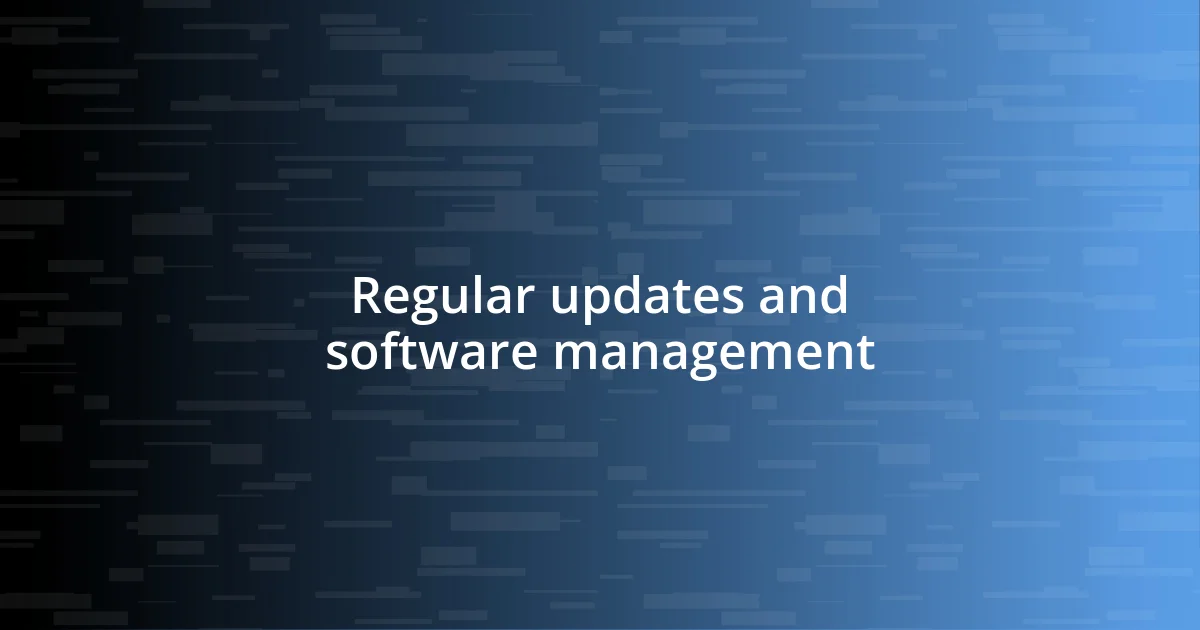
Regular updates and software management
Keeping my software updated has been a pivotal part of my crypto security strategy. I remember a time when I ignored system updates, and it led to a frustrating experience. My trading app crashed at a crucial moment, and I missed out on a significant market opportunity. That incident made me realize how essential it is to keep all my software—including wallets and applications—current. Regularly updating software ensures I receive vital security patches and enhancements, empowering me to navigate the crypto landscape with confidence.
I’ve also learned the importance of managing the software on my devices. You might not think much of unused applications, but I’ve discovered that they can serve as gateways for vulnerabilities. After encountering a friend who lost funds due to an old app that wasn’t updated, I made a habit of auditing my installed software. If I find something I haven’t used in a while, I simply delete it. This not only reduces my risk exposure but also clears clutter from my digital space, keeping my devices running smoothly.
What often surprises me is how many people overlook the option of automatic updates. At first, I hesitated to enable this feature because I worried it might disrupt my workflow. However, I eventually realized it saves me from manual checks and potential missed updates. Now, whenever my devices prompt for a restart after an update, I feel a quiet reassurance—it’s like having a security blanket wrapped around my crypto investments. Why not let technology do the heavy lifting while I focus on more critical decisions?
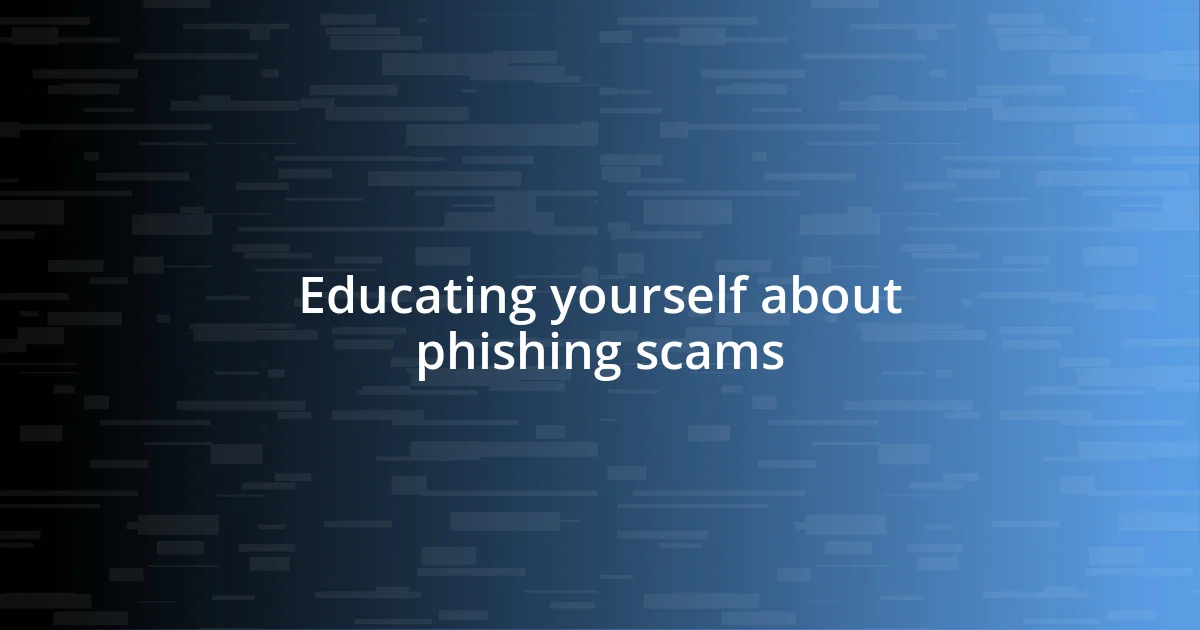
Educating yourself about phishing scams
Phishing scams have become one of the most insidious threats in the crypto world. I still remember a time when I received a seemingly legitimate email about a new trading feature, only to find out later it was a well-crafted phishing attempt. Thankfully, I paused for a moment, taking a breath and analyzing the sender’s email address. That little voice in my head saved me from opening any links—a moment that could have spiraled into disaster.
The emotional toll of falling victim to a phishing scam can be devastating. I know someone who lost significant funds after clicking on a link that appeared to come from a trusted exchange. The panic and regret in their voice were haunting as we discussed how they felt betrayed by their own carelessness. Educating myself about these scams, including how they work and what signs to look for, has helped me stay two steps ahead of potential threats. It’s less about living in fear and more about being aware and prepared.
I often ask myself: How many times must we hear about individuals losing their hard-earned assets before we take the necessary precautions? Learning to recognize phishing attempts has become essential not just for me, but for anyone involved in crypto. I’ve found that regularly revisiting reputable resources on crypto security solidifies my understanding and keeps me vigilant. After all, a little effort in education today can prevent a lot of heartache tomorrow.
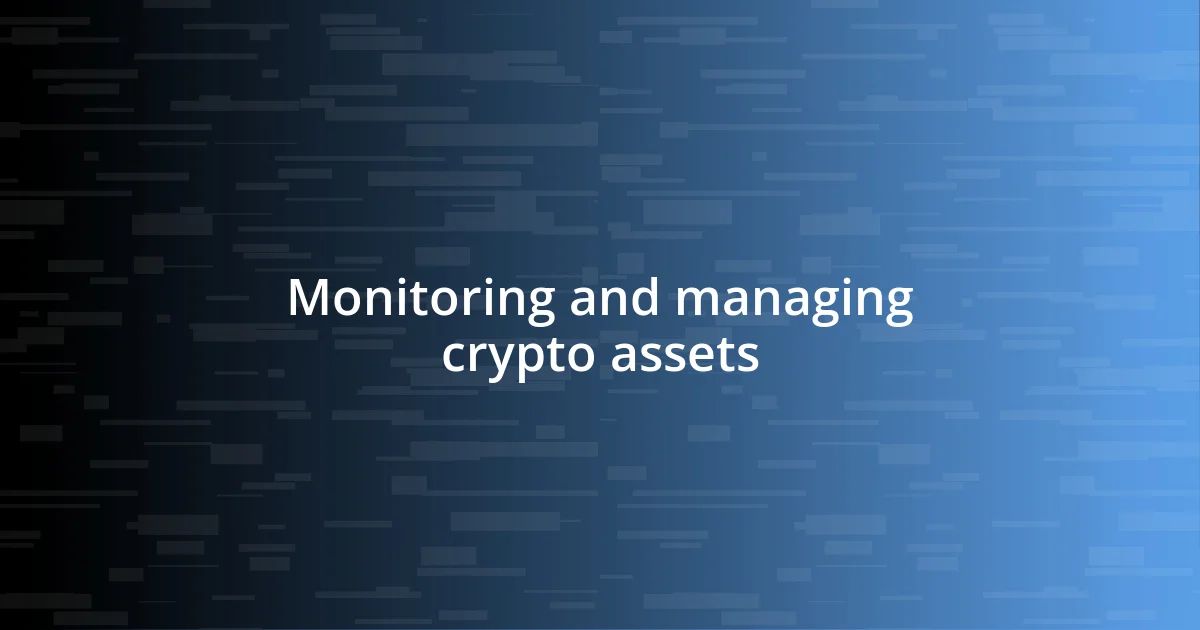
Monitoring and managing crypto assets

Monitoring and managing crypto assets
Managing my crypto assets effectively has proven to be both an art and a science. At first, I was overwhelmed by the sheer volume of transactions and drops in my portfolio. I quickly realized that setting up alerts for significant movements in prices or changes in my assets made all the difference. These notifications became my early warning system, allowing me to make more informed decisions rather than reacting in panic. I often wonder, how did I ever function without this simple tool?
I also adopted the practice of weekly reviews of my portfolio, which has transformed how I view my investments. There was a moment when I narrowly avoided a loss during a market downturn solely because I had identified a lackluster asset during my review. Keeping a keen eye on what’s working and what’s not allows me to make targeted decisions. Trust me, having a clear view of my investments gives me peace of mind and confidence as I navigate this volatile space.
What truly fascinates me is the power of analytics tools. When I started using a portfolio tracker, it opened my eyes to intricate patterns in my trading behaviors. It’s almost like having a coach that points out where I should improve and where I excel. Do you ever think about how data can reshape your investment strategies? I know it did for me; I now assess my performance with a fresh perspective, which keeps my financial goals on track. Monitoring isn’t just about vigilance; it’s about employing data to drive smart choices!












